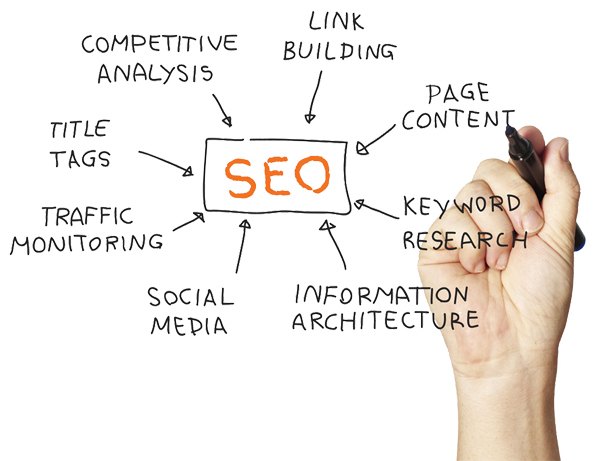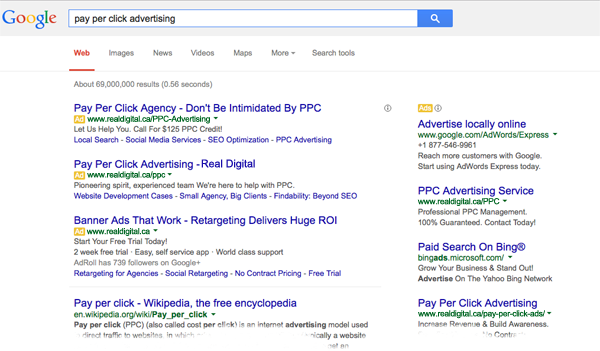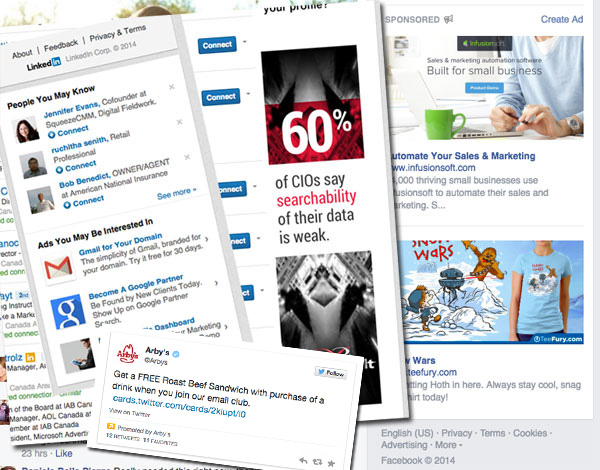Search Engine Marketing (SEM) and Social Advertising
What is Search Engine Marketing (SEM)?
 The alphabet soup of digital marketing can get confusing and many people (and many agencies) confuse SEO (Search Engine Optimization) with the more general SEM (Search Engine Marketing).
The alphabet soup of digital marketing can get confusing and many people (and many agencies) confuse SEO (Search Engine Optimization) with the more general SEM (Search Engine Marketing).
Search Engine Marketing is the general term for the promotion of a website by increasing its visibility in search engines.
Some equate SEM with Pay Per Click advertising (PPC), to differentiate it from Search Engine Optimization (SEO). In fact, both SEO and PPC are SEM strategies.
If you think all of this alphabet soup is confusing, you’re not alone and it’s not an accident.
Some in our industry try to overcomplicate things to cover for the fact that they are not as “expert” as they’d like you to believe. If they make it hard to understand what they do, it’s easier to cover for not doing it well.
There are a lot of great companies and consultants doing SEO very well for their clients. Unfortunately, there are more people using outdated or worse, “black hat” tactics in their search engine optimization campaigns, and in the end it’s the companies that hire these people that suffer Google’s wrath.
Search Engine Marketing is a website traffic strategy and ideally, includes a mix of SEO, Paid Search (PPC), and Social Advertising.
Search Engine Optimization (SEO)
Search engine optimization (SEO) is the process of affecting the visibility of a website or a web page in a search engine’s “natural” or un-paid (“organic”) search results. SEO considers how search engines work, what people search for, the actual search terms or keywords typed into search engines and which search engines are preferred by their targeted audience.
Optimizing a website usually involves editing its content and coding to both increase its relevance to specific keywords and to remove barriers to the indexing activities of search engines. Promoting a site to increase the number of backlinks, or inbound links, is another SEO tactic.1
Which tactics work best depends on a number of factors that change frequently as Google, Bing, and the other search engines change their algorithms. That’s what makes SEO so challenging. And to us, fun!
Pay Per Click and Display Advertising
With Pay Per Click (PPC) advertising, you pay publishers (the search engines) only when an ad is clicked. You bid on keyword phrases that users enter to search the web, and specify which keywords should trigger certain ads. When a user conducts a search, relevant ads are shown as “sponsored links” on the right side of the screen, and sometimes above the main search results.
There are factors other than bid price that determine if your ad appears for a given set of keywords, and the position of the ad on the page. Things like relevance of ad copy to the corresponding target website or landing page, the number of people who click on your ad, and other advertisers bidding on the same keywords and phrases, currently influence ad positioning and campaign success.
Social Advertising
Advertising on Social Networks like Facebook, LinkedIn, and Twitter, works very similar to search engine advertising. The main difference is targeting. In addition to targeting keywords and location, you can target more specifically by demographics like age, occupation or job title, and interests like music, books, movies, etc.
If you have a Facebook page, LinkedIn company page, Twitter account, etc., you can also pay those social networks to promote your profiles to get more followers on the networks, and promote specific posts or updates on those networks to get more people to see the updates.
With Social Advertising, context is especially important. Each social network has it’s own nuances and even it’s own vocabulary. It is very important to be able to make your ads relevant to the people on the specific social network, and in context to what they are likely doing there.



